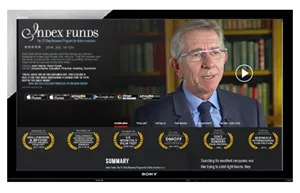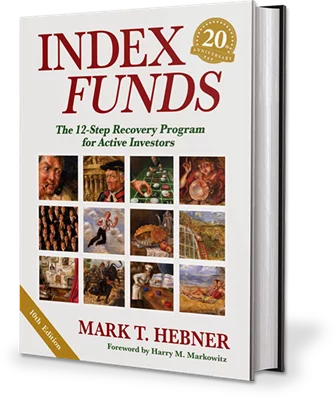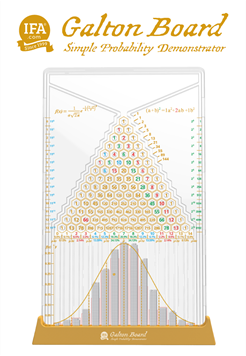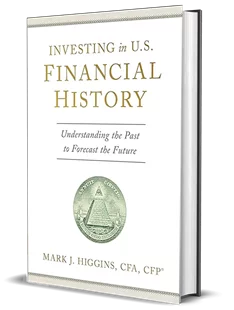Every four years, Americans get a chance to vote for a new president. While outcomes are often uncertain and results can prove unsettling, the reaction of financial markets over time has proven to be fairly unremarkable, perhaps even rather staid.
Regardless of who wins, nearly a century of returns shows that stocks have trended upward. Independent analysis by leading academics and fund companies used to design IFA Index Portfolios have found no definitive correlation between election outcomes and any stock market movements.
A case in point: Market researchers at Dimensional Fund Advisors (DFA) looked at results during presidential election years and the following 12 months. They compared average annualized returns of the blue chip S&P 500 Index going back to the presidential election year of 1928. The index, according to DFA, returned an average annual 11.57% during these calendar election years. At the same time, the U.S. large-cap benchmark had an average annual gain of 10.67% in the calendar year following a presidential election.
As you can see from the chart below, most U.S. presidents left office with the benchmark higher than when their administrations took over. Exceptions included the sequential terms of Calvin Coolidge and Herbert Hoover, both of which were engulfed by the Great Depression. Also, the 43rd president of the United States (George W. Bush) finished his term mired in the early days of the 2008-2009 Great Recession.
What about stock market results in those years when the U.S. had a divided government? As shown in the graph below, which was compiled by DFA researchers, returns of the S&P 500 Index generally kept rising whether Democrats or Republicans held power on Capitol Hill.
We've even looked at times when our nation's capital worked in a more unified fashion. The chart below shows the S&P 500 Index's annualized averages since 1926 when the White House, the House of Representatives and the Senate were all controlled by a single party.
Republicans held sway over the executive and legislative branches in 13 of those years. The average of the 13 different annualized returns for the S&P 500 Index was 14.52%.
Meanwhile, the Democratic party held unified control a total of 36 different years. The average of the 36 annualized returns for the S&P 500 Index was 14.01%. Given the scarcity of observations this difference is not statistically significant. Also worth noting: For both parties, unified control didn't always fall in consecutive years over this 98-year period.
Such data might seem a little counterintuitive. In the months and weeks before a presidential election, markets can get overheated. Stock volatility often soars as headlines blurt out the latest poll numbers and cable news analysts scramble to make sense of it all. In such a politically charged environment, it's easy for investors to get confused by stocks moving in a different direction than they expected.
During these short-term bouts of market volatility, investors might be tempted to abandon their current and longer-term focused investment strategies. As discussed in the video below by Kenneth French, a finance professor at Dartmouth College and a nationally recognized authority on the behavior of security prices, we like to warn our clients that any form of market timing is an exercise in futility.
Investors can find solace in the fact that markets are forward-looking, meaning that current prices are a reflection of the expectations held by buyers as well as sellers. Roughly 10 million traders participate daily in the real-time interplay that defines free markets by establishing a structure for agreement on a fair price. By its very nature, such a dynamic and equitable pricing process is designed to take into account all news and publicly available information to market participants. As a result, expectations of future market changes can be found embedded in a share's price.
The big picture takeaway is striking: Trying to outguess other market participants based on a presidential election isn't likely to be a very reliable way to make asset-allocation decisions. While putting money into index funds is our recommended way to build wealth, IFA's advisors stress that investing is a long-term undertaking. The best-case scenario of betting on election outcomes is that any oversized return will likely be the result of random luck. At the same time, letting emotions guide the investment process can lead to costly mistakes.
Instead of relying on political prognostications, we urge investors who are concerned about future elections to focus on ensuring that their portfolio risk exposures match their risk capacity. Along these lines, a comprehensive financial plan can be a powerful tool to assist investors in the accomplishment of their investment goals. Such a holistic-minded plan, which takes into account portfolio holdings along with other assets making up a household's total balance sheet, is available to all IFA clients on a complimentary basis.
This is not to be construed as an offer, solicitation, recommendation, or endorsement of any particular security, product, service, or considered to be tax advice. There are no guarantees investment strategies will be successful. Investing involves risks, including possible loss of principal. This is intended to be informational in nature and should not be construed as tax advice. IFA Taxes is a division of Index Fund Advisors, Inc. For more information about Index Fund Advisors, Inc., please review our brochure at https://www.adviserinfo.sec.gov/ or visit www.ifa.com.














